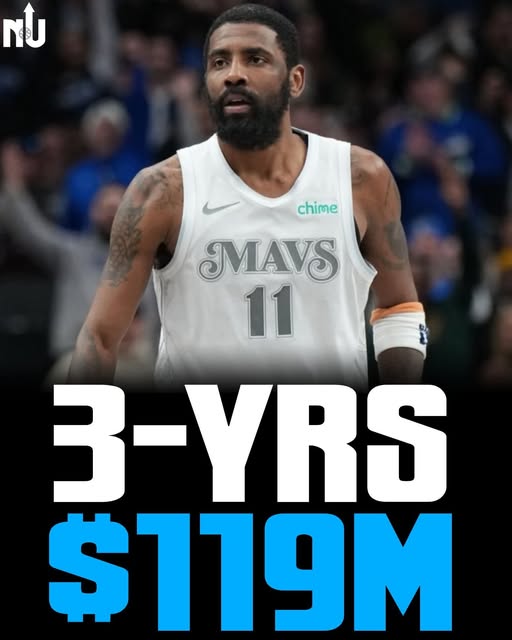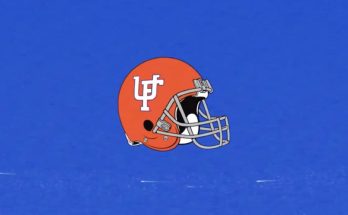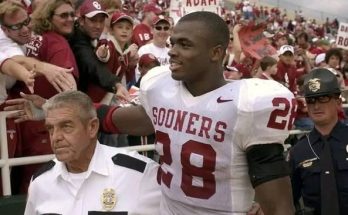When news broke on June 25, 2025, that Kyrie Irving had decided to turn down the guaranteed $43 million player option for the 2025–26 season in favor of a fresh three‑year contract worth $119 million, it triggered conversations throughout the NBA world. According to multiple reports—from ESPN’s Shams Charania to the Associated Press—Irving is now secured under a deal that extends through the 2027–28 season, with another player option in that final year (reuters.com). But beyond the headline numbers, the choice carries deeper strategic significance—and some calculated gamesmanship by both Irving and the Mavericks.
On the surface, many fans and analysts noted that Irving actually took a modest financial reduction in annual average salary. His former deal would have paid him $43 million in 2025–26; the new contract averages roughly $39.7 million per season . Why give up nearly $3.5 million? The answer lies in long‑term security, roster flexibility, and organizational alignment. Irving, recovering from a torn ACL sustained in March, faced the risk of injury—sacrificing one hefty season to lock in guaranteed money and a longer commitment from Dallas fits his future‑proofing calculus.
From the Mavericks’ perspective, this maneuver achieves multiple goals. Dropping from $43 million to about $40 million in average salary helps them remain below the “second apron” of the salary cap—unlocking a valuable $5.7 million taxpayer mid‑level exception to chase role players or bench reinforcements (hoopsrumors.com). That flexibility is crucial as Dallas looks to build a sustainable championship‑contender core around Irving and Anthony Davis after the blockbuster trade involving Luka Dončić (sportsnet.ca).
Even before the deal was announced, it was clear the Mavericks wanted to build with Irving—and Irving wanted to stay. Shams Charania described the situation as a mutual commitment: “Mavericks officials and Irving’s agent… negotiated the new deal that keeps Irving out of free agency and in Dallas long term” (espn.com). Both sides conveyed a shared belief that the next chapter—returning from injury together, integrating rookie phenom Cooper Flagg (the expected No. 1 pick), and capitalizing on Davis’s presence—could form a championship‑level core.
Financial implications
Though Irving’s first‑year salary drops by a few million, the deal maintains his status among the highest paid players in the league. The three‑year guarantee secures roughly $120 million, with flexibility in 2027–28 if he chooses option in that final year (reuters.com, hoopsrumors.com). It’s a trade‑off that favors longevity and protection against injury, rather than one season’s maximization. Dallas benefits too: lowering this year’s cap hit grants them room to pursue other talent via MLE or small signings.
Rehabilitation and timing
Irving suffered a torn ACL in March 2025 and underwent surgery late that month. Medical sources and the team expect him to return by January 2026 (reuters.com, es.wikipedia.org). With recovery well underway, locking in the new contract now guarantees financial coverage during rehab and ensures his return happens within a familiar system under coach Jason Kidd.
Team construction and floor spacing
Dallas is evolving. The departure of Dončić alongside the addition of Davis signals a shift in playing style, prioritizing half‑court efficiency and veteran leadership. Keeping Kyrie provides gravitational attraction—his playmaking, shooting, and clutch gene remain top‑tier. With rookie Cooper Flagg entering the fold, the Mavericks reinforce as a multi‑generational core: Irving’s current peak, Davis’s inside force, and Flagg’s future upside (reuters.com).
Contract structure and optics
There’s a symbolic weight to Irving declining the $43 million option. It’s as if he’s saying: “I’m committing beyond one new season—I believe in us.” The league-wide perception is that Irving and the Mavericks are serious about winning now and building sustainably. And reports note that the Mavs are fine with offering less than max-level decades‑peak numbers, as long as it shows faith .
Locker room and leadership
Irving’s commitment sends a message. Despite his history of controversy and volatility, he is presenting himself as a leader fully invested long‑term. Coming back from his ACL, he’ll project resilience and dedication. That mindset rubs off on teammates and helps stabilize locker room culture.
Cap management for Dallas
By opting into the three‑year structure, Dallas preserves flexibility. They can potentially use that mid‑level exception to support Irving’s recovery with additional guard or wing depth. And with Davis under contract, they’re steering clear of luxury tax territory—avoiding financial penalties that could constrict roster moves in years ahead.
Market dynamics
Free‑agency in 2025 could see teams with cap room — but Irving staying solidifies Dallas’s standing. It signals there won’t be a bidding war for him. For the league, it sets a precedent: star players who sacrifice short‑term max money can create greater long‑term value and stability for both player and team.
Legacy and narrative
Kyrie’s story arc is unique: from a rising star in Cleveland (2011–2017) to championship hero (2016), to high‑profile moves in Boston, Brooklyn, and now Dallas — and a career threatened by injury, controversy, inconsistency, and yet rebirth. This decision feels like another chapter of reinvention. He’s betting on Dallas to validate a later‑career legacy, and Dallas is betting on him for their next major push.
Future pivot point
If Irving performs up to standard post‑ACL, this deal ends up looking like a bargain. If he struggles, the final option year allows either side to reassess. It’s built with structure: first two years locked, third year optional.
Let’s zoom out: this alignment between Kyrie and Dallas is part of a wider reshaping. With Dončić gone and Davis acquired, they’re centering around an older, veteran‑driven core supplemented by young talent like Flagg. Their aim isn’t just an all‑star tandem—they want a basketball ecosystem: leadership, shot creation, two‑way wings, and a foundation for future sustainability.
Off the court, IRVING has entrepreneurial and brand ambitions—from signature sneakers with Anta to community youth camps. Being in Dallas secures that platform longer. For the organization, consistent star leadership helps with marketing, local support, ticket sales, and sponsorships.
In sum, Kyrie Irving’s decision to “turn down” $43 million and instead sign a three‑year, $119 million extension with a 2027–28 player option is far from a step back—it’s a strategic leap. It balances personal financial risk and long‑term reward, aids Dallas’s roster recalibration, preserves salary cap flexibility, and underscores mutual belief in a high‑stakes goal: an NBA championship.
From signing paperwork to rehab workouts, Kyrie and the Mavericks are betting on this alignment. It’s bold. It’s balanced. And if health and chemistry hold, it could define the next era in Dallas basketball—and another major act in Irving’s legacy story.



